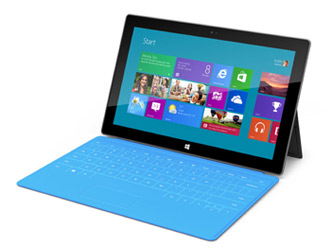
Microsoft will face an uphill battle when it comes to adoption of its Surface tablet, but with the release of Windows Phone 8, digital
agency executives believe ad targeting could improve. ABI Research expects Windows 7, Windows 8 and Windows RT-based tablets to have little impact on the market this year, accounting for only 1.3% of
global shipments. That could change in 2013.
ABI analysts believe Microsoft will play catch-up in 2012, primarily because it lacks adoption for Windows 7, and got a late start launching
the next version, which will not be available until October. The company is introducing a fragmented operating system (OS) strategy with Windows RT and Windows -- something Google has been punished
for by Android OS developers.
"I don't see Microsoft denting Apple's market share, but it's a good move for consumers," said Rob Griffin, EVP, global director of product development at Havas
Digital. "The new Windows mobile OS has been quite popular, so it's a logical extension. For app design, Apple has two things in its favor. One, the install and user base, and two, the controlled
Apple environment makes it easier to design."
Griffin said ad targeting is a whole other opportunity. Microsoft's scale across digital and mobile helps them support better ad targeting.
Targeting requires the ability to tap as few players as possible or it can cause inefficiencies.
The tablet will sync with the Xbox 360 and the Windows Phone 8, unveiled at an event Wednesday
in San Francisco.
The version of Windows Phone 8 will share the underlying technology of the Windows operating system running on tablets, laptops and desktops. That would allow the ability to
share content across three screens, similar to Ray Ozzie's vision shared in mid-2000.
Microsoft spent the past decade developing portions of Surface. Ozzie, one of Microsoft's three chief technical
officers at the time, demonstrated the touchscreen and ability to share content across devices in mid-2000. Then a few years later, Surface, a 30-inch computer tablet-like display, surfaced at the
Sheraton in Boston, Chicago, New York, San Francisco and Seattle.
Producing its own tablet, Microsoft enters a market dominated by Apple, with six out of 10 tablets being iPads, according to
Rhoda Alexander, director of tablet and monitor research at iHS iSuppli. The research firm estimates more than 300 million tablet units will ship annually by 2015. iHS estimates Worldwide Q1 2012
shipments for Apple at 11,800 units; Samsung, 2,195; Amazon, 1,185; Lenovo, 672; Asus, 590; and all others, 3,997.
Microsoft will offer two devices, each appealing to a different audience. It
won't matter what the device is -- ad networks and paid-search platform providers will have the ability to serve up ads on either. Targeting ads based on the type of tablet could become the only
reason a brand might want to know the model. One will run a Windows RT-based ARM tablet powered by an NVIDIA application processor, known for finer graphics.
Many consider the other, a Windows
8 Pro tablet based on Intel's x86 architecture, synonymous with desktop computers.
ABI believes Microsoft's initial market opportunity resides with business buyers that already work with
Windows PCs. The question for the future: will company executives in the "post-PC era" move toward a mobile computing device and ditch traditional desktops?